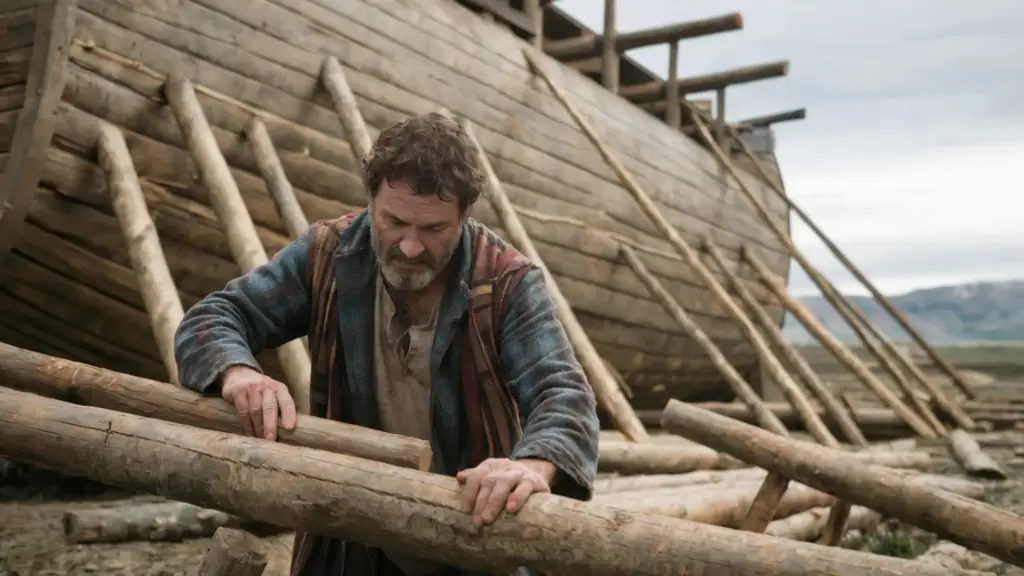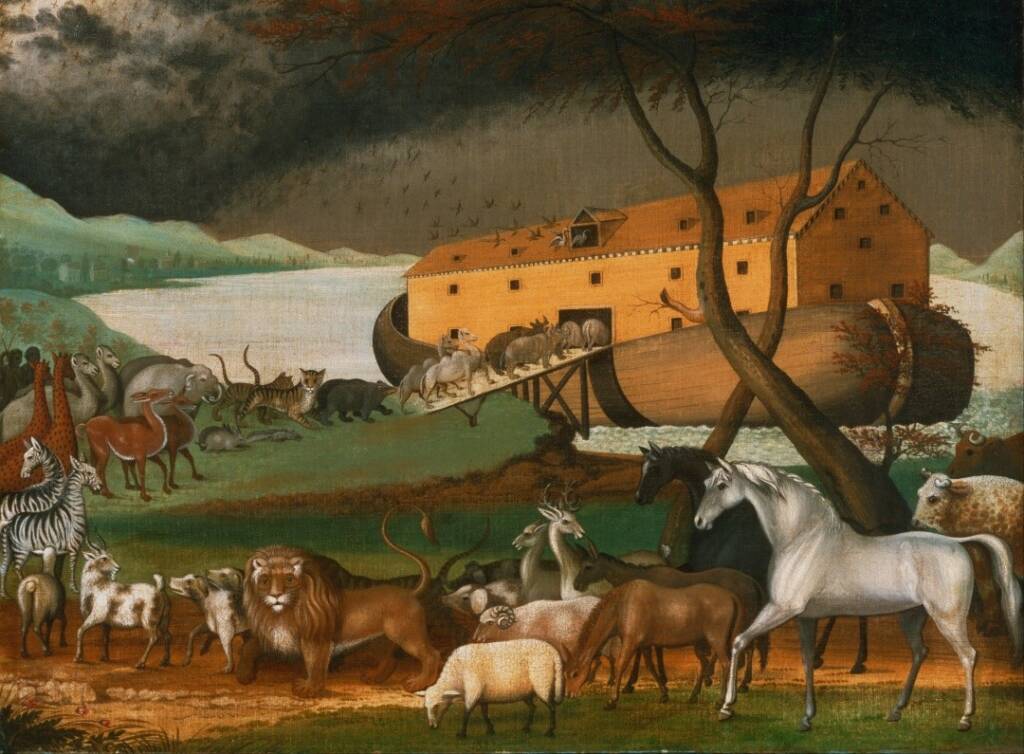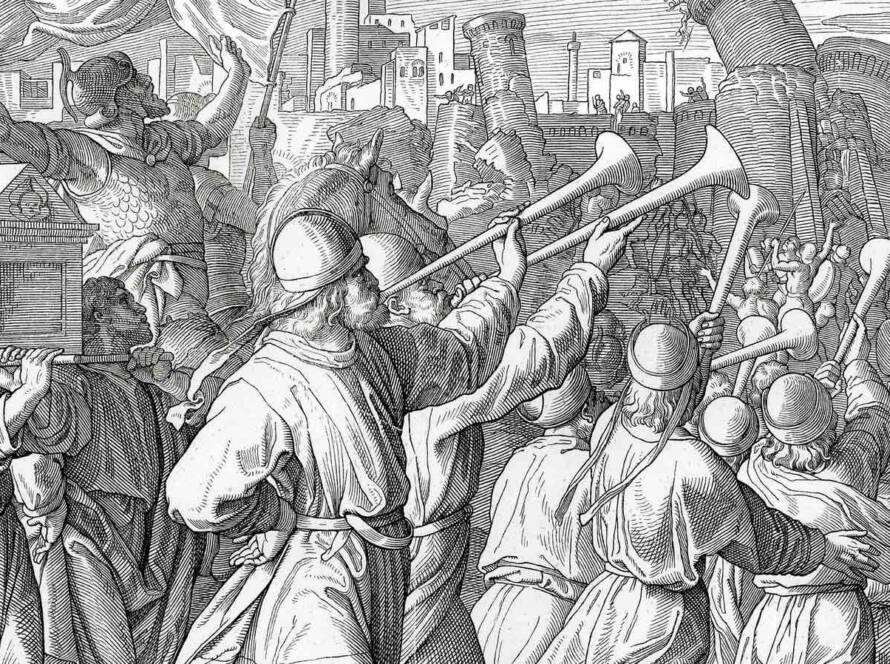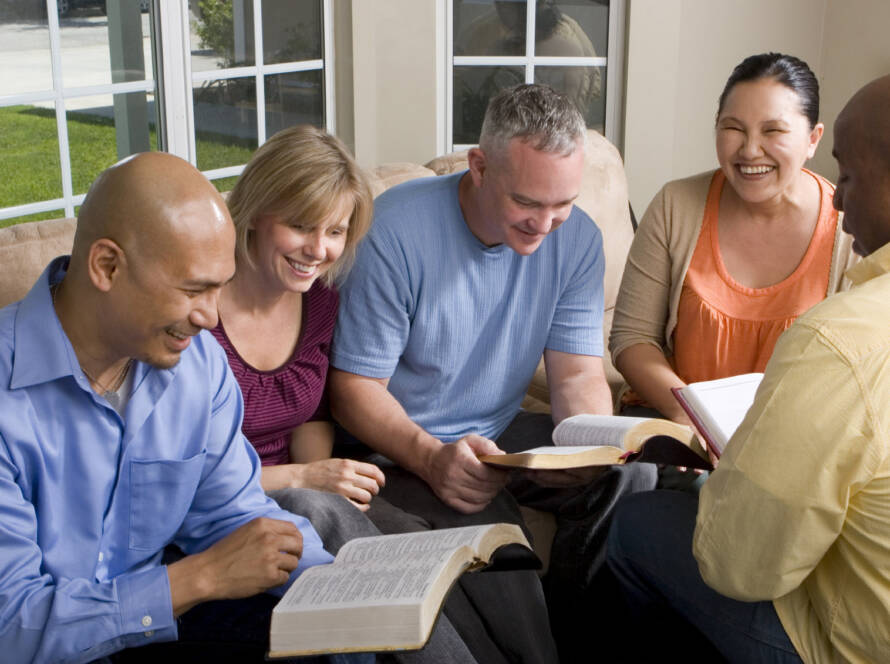Noah’s Flood: A Story of Judgment and Mercy
The story of Noah’s Flood is among the most powerful and mysterious in all of Scripture. It is more than a tale of rain and survival—it is a divine message about the heart of God, the depth of human sin, and the possibility of redemption. Rooted in Genesis chapters 6 through 9, it shows how even in times of judgment, grace finds a way to float.
Humanity Lost Its Way
In the generations after Adam and Eve, humanity multiplied—but so did its corruption. Violence filled the earth. People turned away from their Creator and forgot the holiness of life.
The Bible tells us:
“The LORD saw that the wickedness of man was great in the earth… But Noah found grace in the eyes of the LORD.”
— Genesis 6:5,8
That single line—“Noah found grace”—changes everything. In the middle of a broken world, one man still walked with God. One man listened.

The Ark: Faith in Action
God told Noah to build an ark, a massive vessel of gopher wood sealed with pitch—long before the first drop of rain ever fell. It was a project that took decades, a testimony of faith amid ridicule. People must have laughed at him. No rain, no clouds, no flood—and yet, Noah kept hammering.
The ark became not just a structure, but a symbol of obedience. Every plank said, “I trust You, Lord.” Every nail echoed, “Your word is true.”
When the time came, Noah, his wife, his sons, and their wives entered the ark, bringing with them pairs of all living creatures. The door was shut by God Himself (Genesis 7:16). And then, the heavens opened.
The Days of the Flood
For forty days and nights, rain fell without pause. The “fountains of the deep” broke open. Rivers turned to oceans. Mountains disappeared beneath waves.
The world as it was—filled with sin and violence—was washed away.
But inside the ark, God preserved life. The ark floated like a cradle of grace over the chaos of judgment. It was a reminder that God never destroys without also providing a path to salvation.

The Dove and the Rainbow
After many months, the waters began to recede. Noah released a raven, then a dove—a small symbol of hope in a world reborn. When the dove returned with an olive leaf, Noah knew new life had begun.
When Noah finally stepped out of the ark, he built an altar and offered a sacrifice of thanksgiving. God, moved by this act of worship, made a covenant with Noah—and through him, with all creation:
“Never again will I destroy all life by the waters of a flood.”
— Genesis 9:11
As a sign of that everlasting promise, God set a rainbow in the sky—a bridge of light joining heaven and earth, a sign that mercy triumphs over wrath.
Echoes in History
From a historical viewpoint, flood stories are found across many ancient civilizations—Mesopotamia, India, China, Greece, and beyond. Archaeologists have discovered that the regions around the Tigris and Euphrates rivers experienced catastrophic floods thousands of years ago.
It’s possible that such real events became embedded in human memory and preserved through generations. But in the hands of the biblical writers, this story became something far greater—it became revelation.
The difference between Noah’s story and other flood legends is this:
In the Bible, the Flood is not about angry gods or random disaster—it is about a grieving God whose holiness cannot coexist with evil, yet whose love refuses to abandon creation.
Christ and the Ark of Salvation
For Christians, Noah’s Ark foreshadows something profound. Just as the ark sheltered Noah and his family from destruction, Christ shelters us from sin and death.
The Apostle Peter wrote:
“In it only a few people, eight in all, were saved through water, and this water symbolizes baptism that now saves you also…”
— 1 Peter 3:20–21
The Flood becomes a mirror of spiritual rebirth—the old world dying, and a new life emerging through grace. The waters that once destroyed now symbolize cleansing. The ark becomes the Church, carrying believers safely through the storm.
A Message for Today
Noah’s story isn’t about the past—it’s about every heart today. The same world that once ignored God still builds its towers of pride and pleasure. But the message of the rainbow still shines: God’s mercy endures. There is always a way back.
When life floods us with despair, when storms rise and faith feels small, remember: grace still floats. And in the end, the ark always lands on higher ground.
The story of Noah’s Flood is both history and prophecy—a moment in time that echoes through eternity. It teaches that God is just, but also deeply compassionate. It reminds us that even when judgment falls, love has the last word.
And every time we see a rainbow, we remember not only the promise made to Noah—but the greater promise fulfilled in Jesus Christ, the ultimate refuge from every storm.

The Song: 40 Nights of Mercy
“Forty Nights of Mercy” is a cinematic worship song inspired by the story of Noah’s Ark — a journey through obedience, judgment, and divine renewal.
It begins with the sound of hammering wood and the quiet faith of a man who built in hope before the first drop fell.
Through forty nights of rain and uncertainty, God’s mercy carried life above the waters. When the dove returned and the rainbow crowned the sky, grace spoke louder than the storm. This song reminds us that even in our darkest floods, God’s mercy still floats.
Intro — The Sound of Obedience
Voice (gentle):
One man heard the whisper of heaven,
while the rest heard nothing at all.
Verse 1 — The Call and the Wood
The hammer struck, the boards replied,
Each echo preaching faith, not pride.
No cloud had formed, no drop had shown,
Yet Noah built — and built alone.
Through mockers’ laughs and children’s cries,
He carved obedience under skies.
A covenant hid within each beam,
An ark born out of holy dream.
Pre-Chorus — The Reason
For the earth was filled with rage and war,
Blood cried louder than before.
The Lord looked down — His heart in pain,
To wash the world and start again.
Chorus — The Rising Storm
Then came the rain —
Forty nights of mercy and of mourning.
Thunder rolled like judgment’s warning.
But within the ark, the faithful stayed,
While the old world wept and decayed.
Oh, the rain —
Washing sorrow, washing shame,
Till only grace remained.
Verse 2 — The Waiting and the Silence
The sea was endless, day and night,
The ark a cradle tossed in fright.
No stars, no shore, no flame, no sound,
Just faith adrift and hope unbound.
Noah prayed through wind and tears,
Counted days instead of years.
The world was gone, yet God was near —
Each heartbeat whispered, “He will steer.”
Bridge — The Three Flights of the Dove
Then Noah opened heaven’s door,
And loosed a dove to search once more.
It circled wide but found no place,
Returned with weary wings of grace.
Seven days passed — he sent again,
Through empty sky, through mist and rain.
This time it came with olive leaf,
A living sign of God’s relief.
Seven days more, the dove took flight,
And never came again that night.
The silence spoke what hearts could feel —
The earth was breathing, wounds would heal.
Final Chorus — The Rainbow and the Promise
Then broke the light — the sky set free,
A rainbow arched from sea to sea.
And God declared through wind and flame:
“Never again will I curse by rain.”
Oh, the rain —
Now sings of promise, not of pain.
Grace wrote color across the plain.
A new world breathed, a heart was born,
From tears to dawn —
Grace reborn.
Outro — Whisper
Rain fades. Birds sing. Gentle waves lap wood.
Voice (softly):
And the rainbow still speaks,
Every time we forget what grace can do.
Bible Study: Noah’s Flood — A Story of Judgment, Mercy, and New Beginnings
Main Passage: Genesis 6–9
Key Verse:
“But Noah found grace in the eyes of the LORD.”
— Genesis 6:8
Scripture Reading:
Genesis 6:5–7
“The LORD saw that the wickedness of man was great in the earth… and the LORD regretted that He had made man on the earth.”
Discussion:
In Noah’s time, humanity had turned completely away from God. Violence, greed, and immorality had spread everywhere. The world God created for peace had become corrupted by sin.
Yet even in that darkness, one man walked with God — Noah.
Reflection Questions:
How does the description of Noah’s world compare to ours today?
What does it mean to “find grace in the eyes of the Lord”?
Why do you think God chose to start anew through Noah?
Scripture Reading:
Genesis 6:14–22
“Make yourself an ark of gopher wood… and Noah did everything just as God commanded him.”
Discussion:
The ark was a massive task—450 feet long, 75 feet wide, 45 feet high. It had never rained before, yet Noah believed God’s word and obeyed. His faith wasn’t just belief; it was obedience in motion.
For many years, Noah built the ark while the world mocked him. But when the rain came, only obedience mattered.
Reflection Questions:
What kind of faith does it take to obey God when others don’t understand?
Are there “arks” God has asked you to build—steps of obedience you’re delaying?
How can we practice faith that acts, not just faith that listens?
Scripture Reading:
Genesis 7:10–24
“For forty days the flood kept coming on the earth, and as the waters increased they lifted the ark high above the earth.”
Discussion:
The flood represents both judgment and salvation. God cleansed the world, yet He preserved life through the ark. Inside was safety and covenant; outside was destruction.
The ark is a picture of Christ, who shelters us from the judgment of sin.
Reflection Questions:
How does the flood reveal both God’s justice and His mercy?
What do the waters symbolize for you—judgment, cleansing, or both?
In what ways does Jesus serve as your “ark” in life’s storms?
Scripture Reading:
Genesis 8:6–12; 9:8–17
“I have set my rainbow in the clouds, and it will be the sign of the covenant between Me and the earth.”
Discussion:
When the dove returned with an olive leaf, Noah knew the world was beginning anew. And when the rainbow appeared, it was heaven’s promise that judgment would never again come in the same way.
The rainbow remains a symbol of hope, peace, and divine mercy—a visible reminder of God’s faithfulness.
Reflection Questions:
How has God shown you signs of hope after difficult seasons?
What does the rainbow mean to you personally?
How can you be a “rainbow” to others—a reminder of God’s promises?
Scripture Reading:
1 Peter 3:20–21
“In it only a few people, eight in all, were saved through water, and this water symbolizes baptism that now saves you also…”
Discussion:
Peter connects Noah’s story to baptism—the idea of dying to sin and rising to new life.
The ark that carried Noah becomes a symbol of Christ’s salvation. Just as the ark was the only refuge in the flood, Jesus is the only refuge for our souls.
Through Him, we pass from death to life.
Reflection Questions:
How does baptism connect to Noah’s story?
What storms has Jesus carried you through?
How can you share this “ark of salvation” with others?
Personal Application:
Everyone faces floods—trials, loss, spiritual battles, emotional storms.
Noah’s story reminds us that God always provides a way through. The ark may look different for each of us—a prayer life, community, Scripture, or trust in Christ—but the promise is the same:
God will bring you to safe ground.
Reflection Questions:
What “flood” are you currently facing?
What does obedience look like in your storm?
What “rainbow” has God already placed before you?
Closing Prayer
Heavenly Father,
Thank You for the story of Noah, for showing us that even when judgment comes, Your mercy endures.
Help us to walk in obedience as Noah did—to build what You ask us to build, even when the world mocks us.
When the floods of life rise, let us rest in the ark of Your Son, Jesus Christ.
May Your rainbow remind us that mercy still reigns and grace still floats.
In Jesus’ holy name,
Amen.




